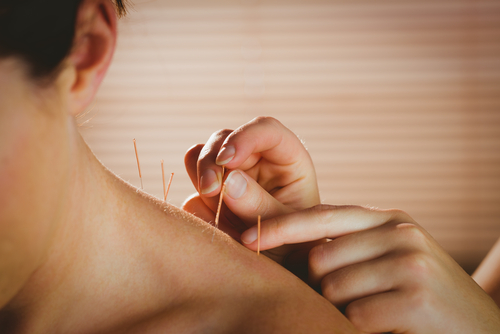Treatment with a technique called dry needling is more effective at reducing fibromyalgia-associated symptoms than myofascial release therapy, according to the results of a clinical trial.
The dry needling method was found to significantly reduce pain and improve the quality of life of fibromyalgia patients compared to myofascial release therapy. It also showed better results in reducing anxiety and depression, as well as quality of sleep and fatigue associated with the disease.
These findings were reported in the study, “Improvement in clinical outcomes after dry needling versus myofascial release on pain pressure thresholds, quality of life, fatigue, pain intensity, quality of sleep, anxiety, and depression in patients with fibromyalgia syndrome,” published in Disability and Rehabilitation.
The study (NCT03015662), led by researchers at the University of Almeria in Spain, included 64 patients diagnosed with fibromyalgia from three associations in the Spanish regions of Almería and Murcia.
The participants were randomized to be treated either with dry needling or myofascial release therapy.
Dry needling uses acupuncture needles that are applied to the pain trigger points in muscles. In this study, active or latent pain points were identified and an examiner, who did not know the status of the points (active or latent), applied the needles. All patients in the group underwent one session per week for a total of four sessions.
Myofascial therapy involves applying gentle sustained pressure to release the soft tissues that surround the muscles, allowing them to be looser while reducing the feelings of pain.
A pain threshold analysis showed that the dry needling group showed significant improvements upon treatment compared to baseline (before treatment began) for most active points, while patients in the myofascial therapy group showed improvement in just a few points over time.
Dry needling was also showed to significantly improve several aspects of patients’ quality of life and symptoms of fibromyalgia one month after treatment. These patients were seen to have better general and mental health, improved vitality, better physical and social function, and reduced body pain compared to baseline.
They also showed reduced levels of anxiety and fatigue, and improved quality of sleep.
These results were compared to patients in the myofascial release group, who experienced small positive changes for physical function and body pain.
“The benefits obtained through dry needling seem to be higher than those achieved through myofascial therapy in the short term,” the researchers wrote.
“Dry needling therapy should be strongly considered as a physiotherapy technique inside the multidisciplinary approach implemented on these patients in the rehabilitation context,” they added.

